Did you know? In recent months, water quality advisory alerts at San Diego beaches—such as Coronado—have surged by more than 25%, raising urgent concerns for families and avid beachgoers. If you're planning to visit Coronado Beach, understanding whether the water is safe is more crucial now than ever. This comprehensive guide has the facts you can’t afford to ignore—from bacteria levels and health risks to staying safe during contamination events.
Startling Facts About Coronado Beach Water Quality
The main question on the minds of many locals and tourists alike is, is Coronado Beach contaminated? This San Diego County hot spot is renowned for its postcard-worthy sands and iconic Hotel del Coronado, but headlines about water contamination have left visitors unsure. Recent findings from the San Diego County Department of Environmental Health show that bacteria levels at county beaches—including Coronado—can sometimes exceed state health standards, posing public health risks. Factors such as heavy rainfall, coastal runoff, and even nearby cross-border influences like the Tijuana River can lead to contamination spikes.
Understanding the latest water quality monitoring results is key to making informed decisions. When bacteria levels rise above recommended thresholds, County Department of Environmental Health officials may issue warning signs, limiting or even banning water contact activities. These fluctuations make it critical for beach visitors to stay informed by regularly checking updates from the county of San Diego. Remember, even on days when the surf looks pristine, invisible risks might linger just below the surface.
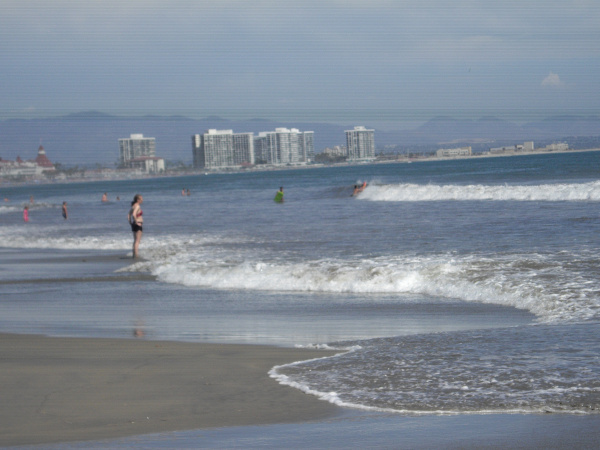
“Recent studies show a significant uptick in bacteria levels at popular beaches, including Coronado. Understanding water quality data is essential for beachgoers.”
– San Diego County Department of Environmental Health
What You'll Learn About 'Is Coronado Beach Contaminated'
The current status of water quality at Coronado Beach
How San Diego County conducts water quality monitoring
Health risks associated with contaminated ocean water
Tips for staying safe when visiting county beaches
Coronado Beach Water Quality Overview
Coronado Beach, affectionately known as one of San Diego County’s crown jewels, consistently ranks among the most visited county beaches in California. However, its reputation for sparkling sands and inviting ocean water can sometimes obscure the reality: like many Southern California beaches, it is subject to periodic water quality concerns.
The water quality monitoring program operated by the San Diego County Department of Environmental Health involves regular sample collection and testing for bacteria and other contaminants. These results determine whether the water is safe for recreational use, including swimming and surfing. After rainfall and storm drain flows, bacteria levels can increase in both ocean and bay water, prompting health advisories or temporary closures. The County Department of Environmental Health works diligently to exceed state health and quality standards by frequently updating public advisories and posting clear warning signs when contamination risks are detected.
Understanding Water Quality Monitoring in San Diego County
San Diego County’s approach to water quality monitoring at Coronado Beach is a benchmark for coastal management practices nationwide. The department’s monitoring program consists of collecting water samples at designated sites—including shoreline and bay water zones—multiple times per week, especially during high-use seasons. Each sample is analyzed for specific bacteria that pose risks to public health, such as E. coli and Enterococcus, both indicators of fecal contamination. These efforts align closely with guidelines set by the state health department and the Environmental Protection Agency.
Data gathered through this rigorous monitoring program is published on official San Diego County websites, empowering visitors to make data-driven decisions. The transparency provided by the County Department of Environmental Health ensures beachgoers know not only if Coronado Beach is contaminated today, but also the trends and patterns over time, contributing to safer, more enjoyable experiences for everyone.
Bacteria Levels and Their Impact on Health
When bacteria levels in ocean water exceed state or county health standards, swimmers may face increased risks of skin rashes, ear infections, and gastrointestinal issues. For sensitive groups—children, elderly people, and individuals with weakened immune systems—exposure to contaminated water can result in even more severe health problems. Research shows a direct correlation between water contamination events at county beaches and a spike in reported cases of illness after recreational contact.
Warning signs are immediately posted at access points and lifeguard towers whenever test results indicate a threat. Since bacteria like Enterococcus can linger in ocean water for days following contamination from storm drains or sewage spills, even short-term exposure can be hazardous. The County Department of Environmental Health provides timely updates and advice, encouraging the public to heed advisories, especially after heavy rainfall or when bay water quality results are out of compliance.
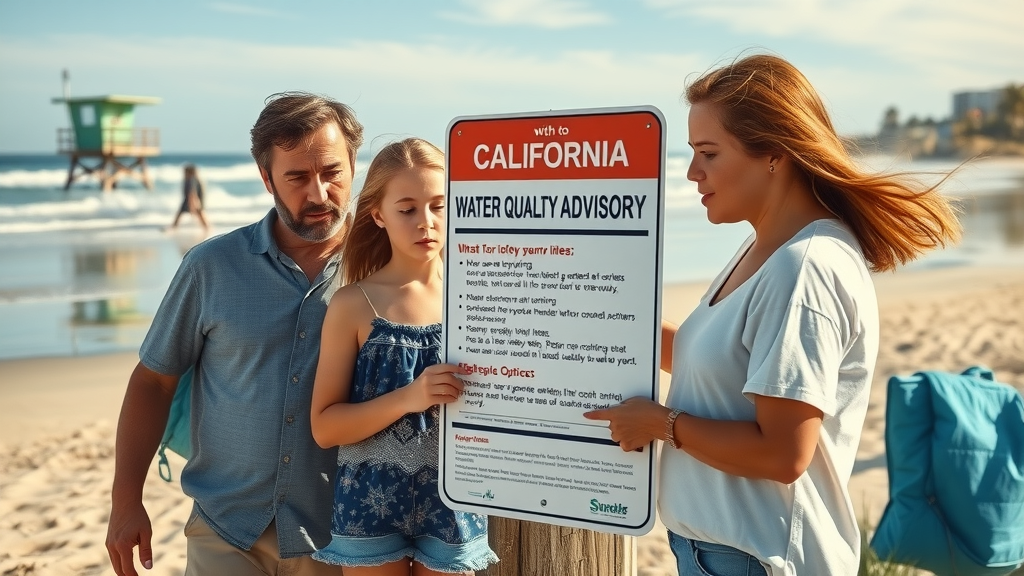
How Does the San Diego County Department of Environmental Health Monitor Water Quality?
Ensuring the water quality of Coronado Beach falls within safe limits is the primary mission of the San Diego County Department of Environmental Health. Their quality monitoring protocols are thorough, incorporating state-of-the-art scientific techniques and strict procedural standards designed to protect public health. This commitment echoes throughout all county beaches, ensuring not just compliance but a culture of continuous improvement in safety practices.
Quality Monitoring Protocols
The department of environmental health focuses on a series of rigorous protocols for testing water. Professionals trained in sample collection visit multiple points along the shoreline and bay water areas, focusing on both frequently used and high-risk zones. Samples are tested for standard bacterial indicators as part of the comprehensive quality monitoring program. Findings are compared to state and federal health standards, which are set to protect against gastrointestinal illnesses and higher-risk conditions.
In addition to routine testing, special attention is given after rainfall or following potential pollution events—times when bacteria levels can spike dramatically. The collected data is recorded and assessed alongside historical water quality results and other county beaches. This diligent approach helps identify chronic contamination sources and seasonal patterns, supporting targeted intervention strategies by local agencies.
Reporting and Notification Process for County Beaches
When contamination is detected—meaning bacteria levels exceed the mandated guidelines—the county acts quickly to safeguard the community. The reporting process involves notifying local authorities, lifeguards, and the public through a series of transparent channels. Eye-catching warning signs are placed at affected beach access points, while real-time updates appear on the San Diego County Department’s website and official social media feeds.
The department of environmental health also coordinates with local news agencies to widen the alert’s reach, ensuring residents and tourists receive timely information about which parts of Coronado Beach (and surrounding county beaches) are impacted. As soon as retesting confirms water quality standards are restored, the advisories are lifted, allowing the safe enjoyment of the ocean and bay waters once again.
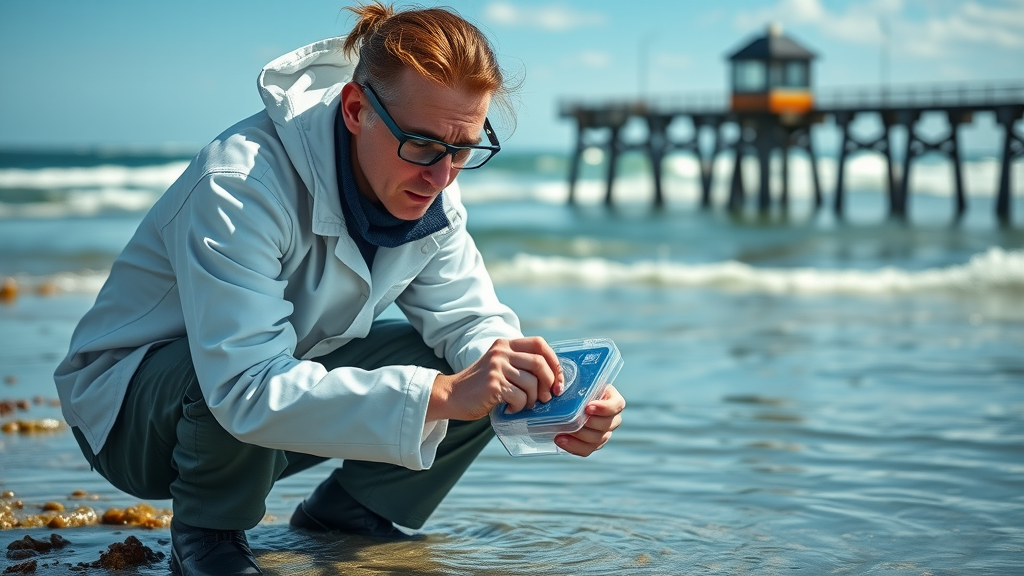
Environmental Health Risks at Coronado Beach
Many visitors wonder, “Is Coronado Beach contaminated only after rain, or could there be other causes?” Healthy beaches can become contaminated for various reasons, often relating to shifting environmental and human activities. From storm runoff to wildlife populations, understanding the root sources is essential for holistic public health.
Common Contaminants and Their Sources
The main culprits contributing to contaminated ocean water at Coronado Beach include urban stormwater runoff, sewage spills, and pollution stemming from nearby river flows like the infamous Tijuana River. These sources carry with them a range of contaminants: bacteria, viruses, and chemical pollutants that can linger within both the surf and sand.
Local infrastructure—such as storm drains that direct city runoff and agricultural byproducts—can also transport contaminants straight into bay water and beach environments, leading to elevated bacteria levels. While some of these challenges are seasonal, with rainfall playing a significant role, others relate to ongoing maintenance and cross-border collaboration. The department of environmental health regularly investigates and addresses these sources to reduce long-term risks at all county beaches, including Coronado.
Seasonal Variations in Ocean Water Contamination
Contamination at Coronado Beach is strongly linked to changes in the weather, particularly following heavy rainfall. When hillsides and city landscapes are saturated, stormwater runoff sweeps debris and waste into the ocean, spiking bacteria levels. This means winter and early spring months typically see more advisories compared to drier, summer periods, although unexpected pollution events can occur year-round.
Understanding these seasonal trends helps explain why water quality advisories may surge during certain times, and why people are urged to stay out of the water for at least 72 hours after significant rain. Regular testing and quality monitoring by the County Department of Environmental Health provide up-to-date information, promoting mental health by reducing anxiety associated with the unknown risks of ocean water contamination.
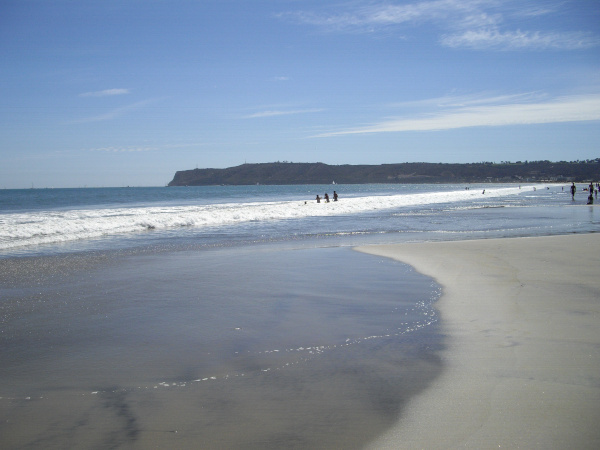
Recent Data: Is Coronado Beach Contaminated Right Now?
Curious about the current status of Coronado Beach water quality? The following table presents the most up-to-date bacteria levels, along with a side-by-side look at how Coronado compares to other county beaches in San Diego.
Latest Water Quality Results for Coronado Beach |
Bacteria Levels |
Comparison with Other San Diego County Beaches |
|---|---|---|
Coronado Beach – Central |
Below state health standards (Safe for swimming) |
Similar results as La Jolla Shores; better than Imperial Beach (on advisory) |
Coronado Beach – North |
Borderline high; advisory in last 24 hours due to rainfall |
Higher levels than Torrey Pines but lower than Silver Strand |
Coronado Beach – South |
Meets daily health and quality requirements |
Safer than some other county beaches; closely monitored after storms |
List: Steps to Stay Safe on San Diego County Beaches During Contamination Events
Check San Diego County water quality advisories before visiting by consulting the department’s website or social media.
Avoid swimming after rainfall in ocean waters, as stormwater may have increased bacteria levels.
Obey posted warnings about bacteria levels and only enter the water when advisories are lifted.
Rinse off with clean water after ocean activities to minimize health risks from possible contaminants.

Why can't you swim at Coronado Beach?
Answer: Reasons for Beach Closures and Swimming Bans
Swimming at Coronado Beach may be temporarily off-limits due to water quality advisories triggered by high bacteria levels. These advisories are strictly enforced by the county department of environmental health when tests show contaminants, often following heavy rain, sewage spills, or unusual bay water quality changes. Immediate beach closures protect public health from potential infections and other serious illnesses. Signs warning of contamination are posted, and lifeguards monitor entry points until the advisory is lifted. For your safety, follow all posted guidelines and wait for confirmation from the San Diego County Department before entering the ocean water.
Which beaches are contaminated with bacteria in California?
Answer: A List of Currently Affected County Beaches
Bacterial contamination is not exclusive to Coronado Beach; other county beaches in California, especially in San Diego County, may also have advisories from time to time. Some commonly affected beaches include Imperial Beach, Silver Strand State Beach, and areas near the mouth of the Tijuana River. These beaches are monitored daily, and advisories are issued if bacteria levels exceed state and county health standards. To stay updated, check official San Diego County websites and reporting platforms, where you’ll find details about which local beaches are currently under advisory and when they are cleared for recreational use.
What is the safest beach in San Diego?
Answer: Top San Diego Beaches with Best Water Quality Monitoring Results
If you’re seeking the safest county beach in terms of water quality, La Jolla Shores and Del Mar Beach consistently top the rankings based on San Diego County’s quality monitoring data. These beaches benefit from rapid currents and fewer pollution sources, meaning bacteria levels seldom exceed acceptable thresholds. Regular, transparent reporting from the department of environmental health allows the public to choose beaches known for safe ocean water conditions and minimal advisories, making them ideal options for families and those with sensitive health needs.
Can you go to the beach in Coronado?
Answer: Accessibility and Safety Guidelines for Public Visitors
Yes, Coronado Beach remains one of San Diego County’s most accessible and scenic destinations. Even when advisories are active for ocean water, visitors are welcome to enjoy the sandy shore, walking paths, and stunning views. The county of San Diego ensures clear signage is in place and ongoing maintenance of public amenities, including accessible ramps and maintained pathways. Stay informed about water quality monitoring updates to maximize safety during your visit and follow recommended guidelines for public health.
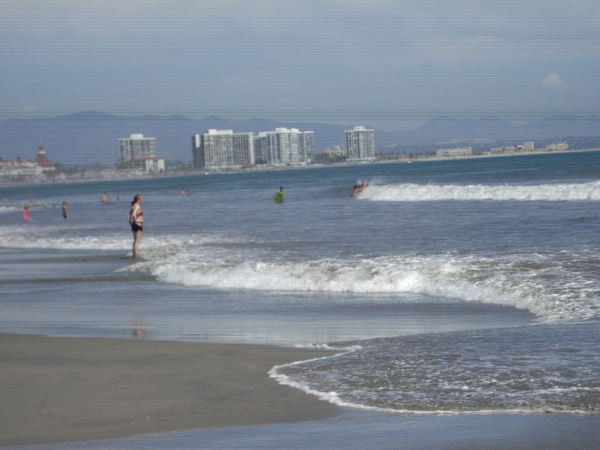
Frequently Asked Questions: Is Coronado Beach Contaminated?
How often does the county department of environmental health test water at Coronado Beach?
Water samples are collected and tested at least two to three times per week, with increased frequency after rainstorms or pollution events.What does a high bacteria level mean for swimmers?
Elevated bacteria in the ocean can cause infections, skin irritation, diarrhea, and other health issues, making it unsafe for swimming until advisories are lifted.Who should avoid ocean water when advisories are in place?
Children, seniors, and anyone with a weakened immune system should avoid contact with contaminated water during advisories. However, all swimmers are encouraged to heed posted warnings.How quickly does water quality improve after contamination events?
Water quality often improves within 1–3 days after rain stops and runoff dissipates, but timing can vary based on weather, tides, and the contamination event’s severity.
Key Takeaways on 'Is Coronado Beach Contaminated?'
Water quality at Coronado Beach fluctuates and is actively monitored
Bacteria levels may rise after rain, impacting health and safety
San Diego county regularly updates public on beach contamination status
Staying informed is critical for safe recreational activities
Conclusion: Making Informed Choices About Coronado Beach Safety
Empowering Beachgoers: Your Role in Water Quality Awareness
Stay informed and proactive—by following county advisories and water quality updates, you help protect your health and the wellbeing of the entire San Diego community.
Watch: Video Guide to San Diego County Water Quality Monitoring
A professionally produced video summary explaining San Diego County’s beach water quality monitoring process, featuring real footage of testing, expert interviews, animated infographics, and actionable tips for visitors.
Watch: How the Department of Environmental Health Tests Ocean Water
Learn step-by-step how San Diego County experts collect and analyze water samples, keeping you safe during every beach visit. Check official county videos and online resources for more insights.
Take Action: Check Real-Time Water Quality Before Visiting Coronado Beach
Before heading to Coronado Beach, visit the official San Diego County water quality monitoring page for the most up-to-date information about ocean and bay water advisories.
 Add Row
Add Row  Add
Add 




Write A Comment